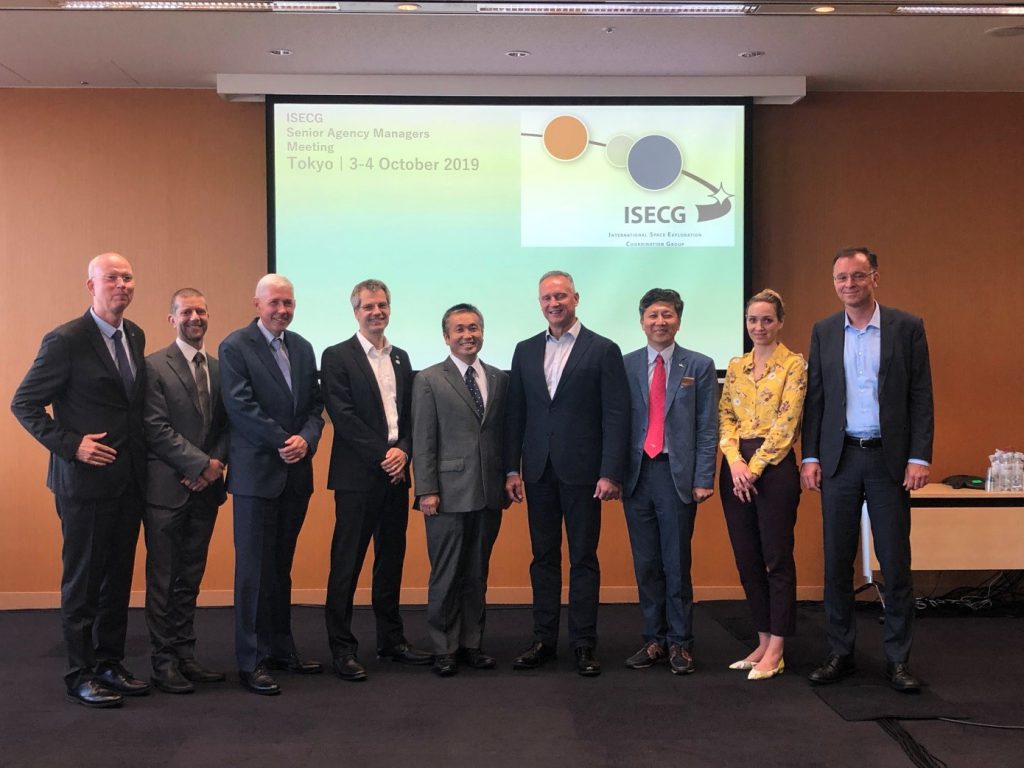
TOKYO – On October 3-4, 2019, senior managers representing 11 space agencies gathered at a meeting of the International Space Exploration Coordination Group (ISECG) with the purpose of promoting coordinated efforts toward human and robotic space exploration on and around the Moon and Mars.
Hosted by the Japan Aerospace Exploration Agency, JAXA, as the current chair of ISECG, the participating space agencies reviewed the work of ISECG to foster increased space exploration.
In recognition of the growing global effort and momentum toward going forward to the Moon and Mars, the agency leaders affirmed the importance of collaborative approaches for space exploration. The organisations will be developing an updated reference lunar surface exploration scenario, recognising the shared goal of a sustainable operation on and around the Moon directly contributing to enabling human missions to Mars. The lunar surface scenario will be based on new and updated agency plans and their science goals and technology development strategies.
Sustainability is a key for promoting long-term human exploration. The leaders affirmed the roles of the U.S.-led lunar Gateway, which is critical to lunar surface missions, facilitation of scientific discovery, and future deep space exploration. The agencies also noted the shared interest and importance of potential In-Situ Resource Utilisation (ISRU), including the use of water ice on the lunar surface, which may create opportunities in the coming decades.
The leaders also reaffirmed the significant opportunities in the low-Earth orbit (LEO) including the crucial functions of the International Space Station for the preparation and demonstration of human activities toward the Moon and Mars. The agencies also noted the ongoing efforts in LEO to demonstrate advancing systems and technology readiness for upcoming exploration missions.
Under the growing global support and plans for space exploration, the leaders expressed their intent to engage stakeholders and to increase public support to realise sustainable exploration for future generations.
The leaders noted both the near- and long-term opportunities for increased collaboration. They also noted plans for space agency leadership to gather at the International Astronautical Congress in Washington, DC, later this month, to continue discussions on priorities and opportunities for cooperation. ISECG space agencies welcomed the Romanian Space Agency and Swiss Space Office as new member agencies, and also noted the Luxembourg Space Agency’s recent application for ISECG membership.
The meeting in Tokyo included representatives from the Italian Space Agency (ASI), French Centre National d’Etudes Spatiales (CNES), Canadian Space Agency (CSA), European Space Agency (ESA), Japan Aerospace Exploration Agency (JAXA), Korea Aerospace Research Institute (KARI), National Aeronautics and Space Administration (NASA), Polish Space Agency (POLSA), Russian State Space Corporation (ROSCOSMOS), Swiss Space Office (SSO), and the U.K. Space Agency (UKSA).
